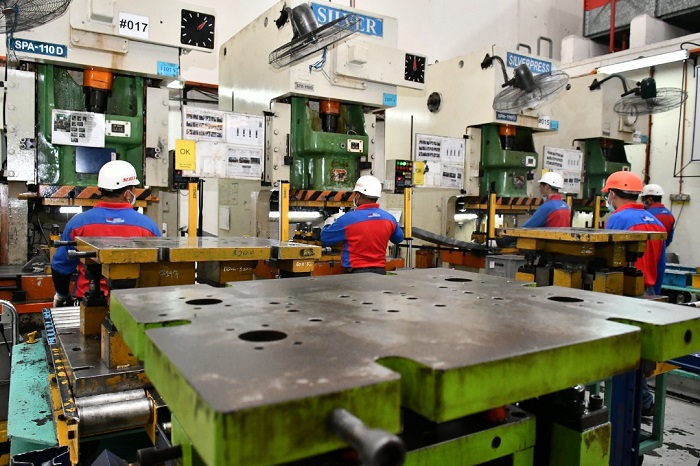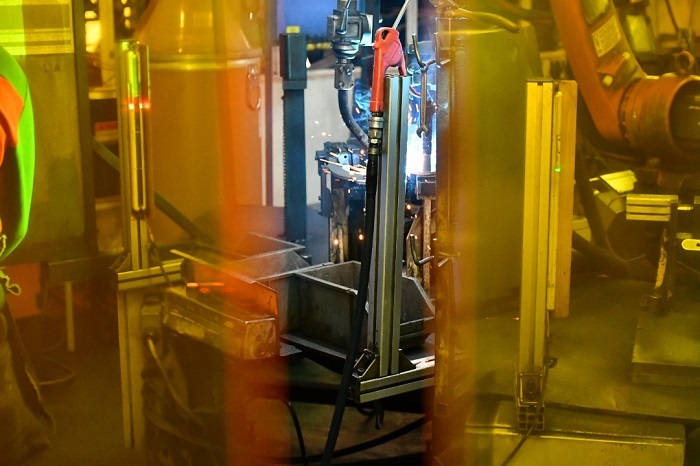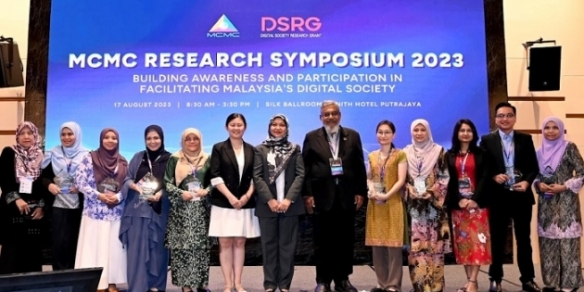MTDC bridges SMEs with I4.0 solutions amidst Covid-19 pandemic
By Tan Jee Yee November 11, 2020
- I4.0 solutions by local providers can be tailored to suit the needs of Malaysian SMEs
- Adoption can be gradual, and it can help address ongoing pandemic challenges

 There has never been a more urgent need for small and medium enterprises (SMEs) in Malaysia to embrace Industry 4.0 (I4.0). Marked by the adoption or enhancements of autonomous systems fuelled by data and machine learning, I4.0 is crucial for SMEs to adapt to – and survive against – the ongoing Covid-19 pandemic.
There has never been a more urgent need for small and medium enterprises (SMEs) in Malaysia to embrace Industry 4.0 (I4.0). Marked by the adoption or enhancements of autonomous systems fuelled by data and machine learning, I4.0 is crucial for SMEs to adapt to – and survive against – the ongoing Covid-19 pandemic.
Covid-19 has tremendously altered the ways businesses operate. As Malaysian Technology Development Corporation (MTDC) chief executive officer (CEO) Norhalim Yunus (pic) puts it, SMEs are currently facing challenges that range from the lack of human resource, to ensuring the execution of Covid-19 standard operating procedures (SOPs) both in and off the shop floor.
Then there is, of course, the issue of competing in a highly competitive world, where increased productivity and efficiency is a must. “Taking all these facts together, it is definitely urgent for our SMEs, especially for smaller SMEs, to look at the possibility of adopting some parts of I4.0 solutions and programs,” Norhalim stresses.
Yet, transitioning into I4.0 may appear daunting. According to Norhalim, many SMEs in Malaysia are sitting between Industry 2.0 and 3.0, with processes still largely manual. Leaping into sensors, data analytics and machine learning requires a running start.  For some SMEs, the runway just isn’t there.
For some SMEs, the runway just isn’t there.
“There is a perception that they are not in the position to receive high technology. The general impression of I4.0 is that it’s inaccessible,” he notes.
But, the barriers stretch beyond just technology. As Norhalim observes, there are human resource-related concerns, such as obtaining the right talent to handle the new tech. Then there are challenges pertaining to marketing and distribution, especially after efficiency has increased.
“Essentially, there are challenges in appreciation, evaluation and adoption of technology which includes human resource capabilities, and also the overall business model and marketing. If you look at it from this point of view, a lot of people will say that they are not ready for I4.0,” Norhalim summarises.

Understanding the gaps
This is where MTDC comes in. The agency is able to aid SMEs in deciding which I4.0 pillars they can adopt, and help ease them towards the pathway for future implementation.
Along with MEDAC (Malaysian Entrepreneur Development & Cooperatives Ministry), MTDC picks 100 companies yearly at varying tech levels to understand the feasible solutions that they can take up.
“We want to explore with SMEs: what will be the entry point for you?” says Norhalim. It’s an important first step, as it allows SMEs to adopt I4.0 solutions at the pace that works for them.
For instance, MTDC has worked with some SMEs to install sensors on their shop floor to provide them with real-time data. This doesn’t constitute a full-fledged delving into I4.0, but by having the sensors and learning how to interpret the data, those SMEs are being led along the I4.0 pathway.
“It’s something that they can chew on, apply in their processes, and later adapt to fit their business model,” Norhalim says. “For SMEs to move forward so that they can be an I4.0 company, they have to start somewhere.”
Even so, SMEs today face another barrier towards I4.0 – the Covid-19 pandemic. While the crisis may have accelerated digital transformation, there’s also no denying that SMEs are currently in “survival mode”, and may not want to invest in I4.0 solutions.
Norhalim is acutely aware of this, but stresses that SMEs need to think not just about today, but how they would survive the gruelling months ahead in the New Normal.
“When we talk about survival, are businesses thinking about becoming more efficient and reducing cost? Or are they trying to put their products on the market?” he raises. “These are two things that are faced by SMEs – besides issues of finance.”
The first right step
For Norhalim, adoption of I4.0 solutions can help SMEs achieve the sort of productivity that can help them overcome issues with labour. MTDC, for one, can help pair SMEs with solution providers that can, for instance, retrofit existing machinery with sensors, servomechanism and control systems – things that can assist companies go from a fully-manual operation to a semi-automatic one.
This, then, reduces reliance on labour, and can be implemented at a more cost-efficient manner. From there on, the SME can begin looking into data analytics.
“From a survival-operation perspective, we can work with companies to look at the options to help them be more competitive, but does not require them to make an investment that is too big for the moment,” he adds. “Yet, the results of that investment will be enabling them to reduce operation cost and make them more efficient.”
MTDC has also been working with local I4.0 solution providers to better cater towards Malaysian SME requirements. For instance, SMEs in the agricultural sector may find purchasing a farming robot for fertilising and pesticide spraying to be too costly. To make the solutions more accessible, MTDC works with the solution provider to offer those robots on a rental or leasing basis.
This has the benefit of helping local I4.0 solution providers understand their market, too. “When we talk about moving across the value chain, we are also trying to introduce solutions which are economical and adaptable to the needs of the users. It makes them more efficient, and overall increases the economic viability of their businesses,” Norhalim explains.
Going forward, Norhalim says that it’s also important to develop SMEs that are able to receive the technology that is fit for them. While I4.0 can help a company increase yield and productivity, this opens up different challenges in the realm of distribution and marketing.
“These are things that SMEs need assistance with. Our goal is also to develop SMEs that are able to receive technology that is right for them,” he says. “What we’re trying to do is to look at these challenges individually and collectively, so that we can address them.”
MTDC certainly has the means to help. They have, after all, served as the technology partner for SMEs for 28 years now, and is pivotal in driving local industries towards I4.0 technologies. This includes the launch of the Centre of 9 Pillars (Co9P™) in November 2018, as well as ongoing initiatives like the MTDC Industry 4.0 Tech Week.
“There is no magical tech that will work on its own. When we talk about tech, we need to be in the position to receive it first,” Norhalim says. The pathway to I4.0 is here. SMEs just need to take the first right step.


